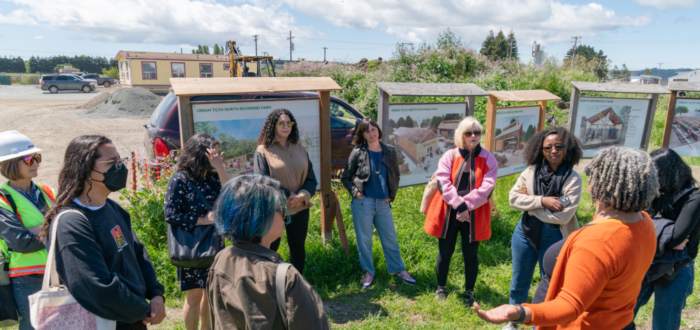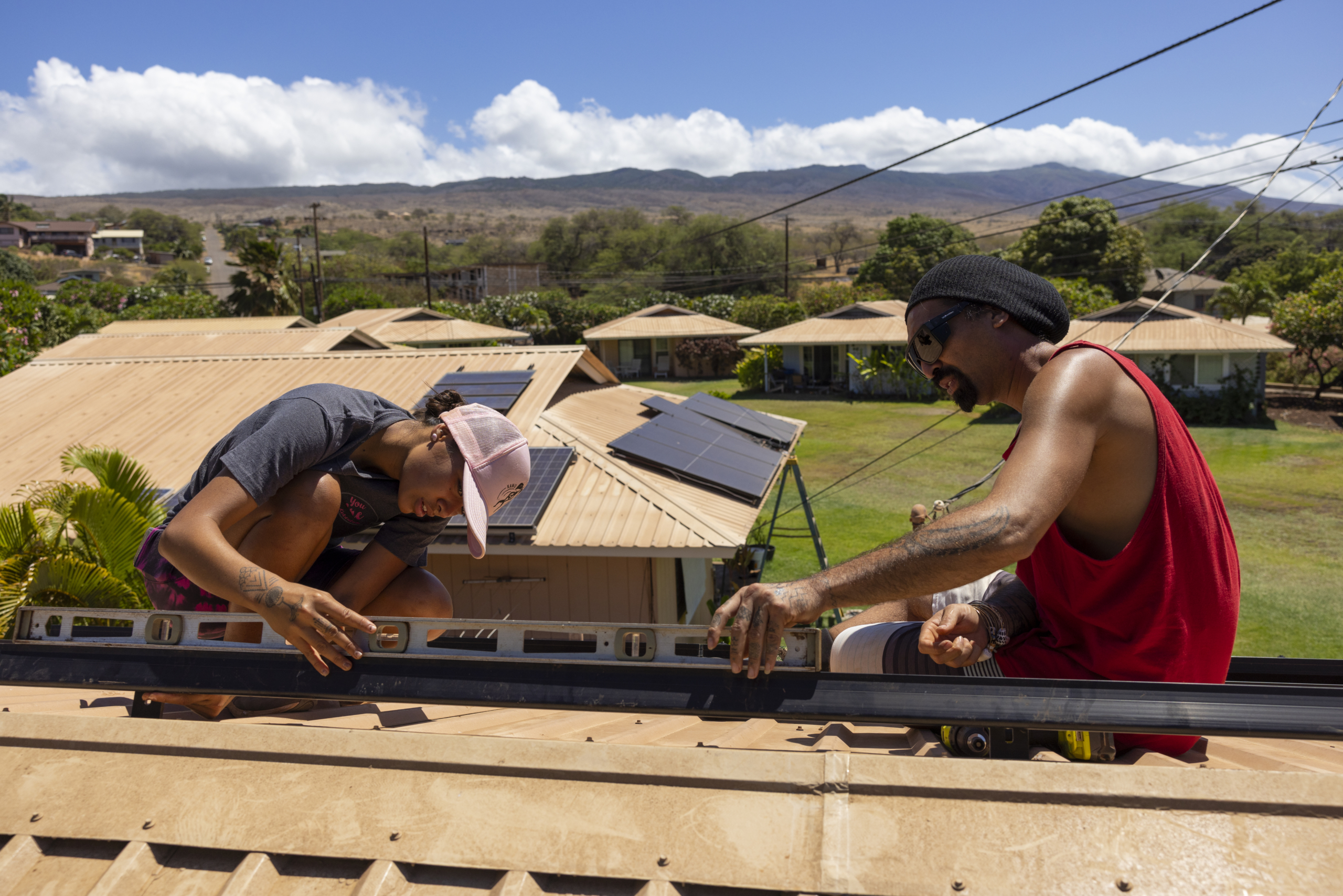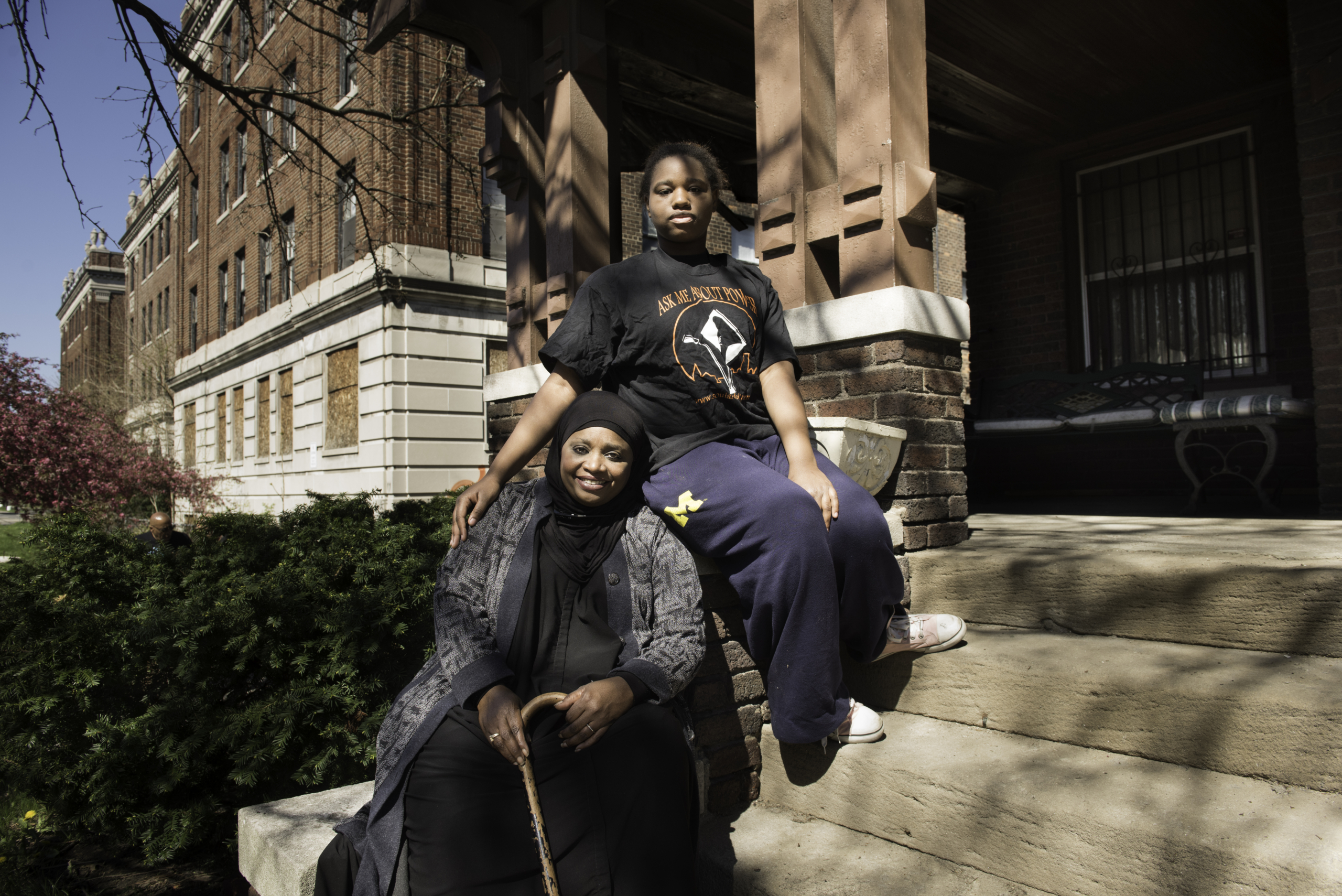
Democracy Fund and The Solutions Project visit grantee partner, Urban Tilth
When The Solutions Project (TSP) first ventured into philanthropy a decade ago, it set out to be a different kind of climate funder. As a reporter covering the sector at the time, I was immediately struck by its rare commitment to grassroots climate justice groups, when most funders were still overwhelmingly betting on top-down policy and technology fixes. The Solutions Project instead went all in on the theory that, when sufficiently funded, climate solutions rooted in frontline communities would scale to create both enduring climate impact and systems-wide change.
In the years since, climate justice has won over far more adherents and philanthropic backers, for a handful of reasons—a racial justice uprising, years of disappointing treaties and policies, and more climate-related suffering in all of our backyards. But the climate justice community is still trailed by a stubborn question: Can community-driven, equitable climate action make a global impact? It’s a question that’s come into even sharper focus following the recent US election and the likelihood of a federal government hostile to climate action.
As the climate justice movement grows and its accomplishments pile up, we are starting to get some answers. TSP commissioned a series of three reports outlining just what kind of results its support for grassroots climate justice work has yielded over time. It’s a lot of data, but for those posing the question of how impactful this strategy can be, the take-home point is that community-led efforts have improved quality of life for millions of people living in frontline communities, secured major cuts in CO2 emissions, and built resilience in the face of climate impacts. Consider some key stats:
While these component achievements are important, they also underpin a larger goal: to rebuild systems from the ground up, by implementing community-level solutions that address underlying causes, and then scaling them up to create broad, lasting change. And while that may be harder to quantify, I found it to be one of the most important takeaways from this research—the foundation for transformative change that’s taking shape.
It is this X factor, the idea of climate justice as a strategy for achieving durable, scalable, and equitable global change, that has always drawn me to this topic. And it’s why I was eager to write this forthcoming series for The Solutions Project exploring the findings from this batch of research. I’ve been writing about climate change for years now, and witnessed the frustrating failures of top-down policy efforts, market schemes, and hollow industry commitments—approaches that continue to dominate the field and draw outsized support from mainstream climate philanthropy. I have long believed that these strategies all too often replicate inequitable outcomes of the fossil fuel economy, but also that they are misguided shortcuts that attempt to bypass a necessary, human-centric foundation for climate solutions. And as often as I’ve beaten this drum, I’m just as interested as anyone in how climate justice actually unfolds on the ground and whether, for lack of better phrasing, it works.
That’s a tough question to definitively answer, but in this research, we can see the outlines of systemic change emerging—as movements grow, as victories snowball, and as climate justice principles trickle up to the highest levels of decision-making. It’s in the data, but it’s also in the stories, so in the following series, I’ll be unpacking how these numbers played out on the ground in three examples—and what they add up to.

Hoʻāhu Energy Cooperative Molokai
As obvious as it may sound, effective climate action must mitigate the advance of climate change and build resilience to its impacts. Because climate justice seeks to change the conditions that hold a problem in place, adherents will argue that climate impacts cannot be fully parsed from other forms of social change. Even so, there is a real need for data on the climate impacts of this work. Without it, climate justice can be too easily misunderstood as a “nice to have” outcome tacked onto a climate strategy, when in fact, it is a powerful climate strategy on its own.
In the suite of research released by TSP, we can see significant reduction of carbon emissions in communities across the country. One of the most direct ways this is achieved is through the blocking and shuttering of fossil fuel infrastructure. So-called “supply side” climate action sets an uncompromising goal that is strangely absent in too many climate policies: ending the production and burning of fossil fuels. TSP grantees notably demonstrated the success of this approach in two major markets, Los Angeles and New York. Critically—for true emissions reduction and for affordable electricity—climate justice organizations pair the blocking of oil and gas production with the push for new, local, renewable energy infrastructure. This approach is required to ensure renewables replace oil and gas in meeting energy needs without simply tapping into dirty energy infrastructure somewhere else. We can see this in the community-owned solar arrays of PUSH Buffalo, or the Renewable Ravenswood plan to convert a fossil fuel generating station into a wind-energy sourced power station.
Meanwhile, grantees equipped several communities to better handle the shocks and stresses of climate change, from heat-related deaths to historic flooding. As we’ll see in Miami, but also in Texas, Arizona, and California, community needs are driving new, resilient infrastructure.
Again, this is something of an artificial distinction, but by isolating impacts that aren’t directly apparent as mitigation or resilience, we can gain a better understanding of how climate action tangibly improves communities. Such outcomes should not be viewed as a side benefit, or a distraction from a focus on climate. Rather, they are central to the idea that community buy-in—and the connection of climate action to the day-to-day needs of real people—is a precondition to solving the climate crisis.
One of the main avenues for progress here is in the closure of polluting fossil fuel energy plants, as well as petrochemical plants in places like Cancer Alley in Louisiana, where grantees like Rise St. James are tirelessly defending community health. The reports also point to labor benefits like union jobs to build renewable energy or public transit infrastructure. There are also a lot of basic quality-of-life improvements, including local economic development, tree canopies in scorching Southwest cities, even access to public swimming pools.
Combined, these numbers build a case that climate action is not merely an environmental issue. It’s also a much-needed social and economic boost, sometimes even a lifeline, for parents, home and small business owners, consumers, voters, workers—otherwise known as, well, people.
The third and most important form of impact that I see as a takeaway from this research is the way systemic change is emerging from these component wins. This is harder to quantify, but one way to think about it is as an ecosystem of interconnected victories, all of which can scale up to a larger impact on the systems that govern our everyday lives. This approach stems from TSP grantees’ belief that climate is inextricable from issues like housing, transportation, water, food systems, public health, poverty, and racial and economic justice. Therefore, the only way to create meaningful change is to treat the problem with the complexity that it demands, using a multi-dimensional climate solutions strategy that engages with all of these issues.
This approach stands in contrast to top-down climate strategies like, say, a big energy policy crafted by a few Beltway NGOs. Even if they are achievable, such victories are often watered down, narrowly defined, or flimsy in the face of shifting political winds. When starting at the community level, however, the outcome is a diverse array of firmly rooted solutions that a broad base of people are deeply invested in and want to see implemented.
TSP research points to a number of indicators that suggest this is underway. For one, there’s the sheer volume of local victories, which start small and then expand. In the case of grantee organizing in places like New York and Los Angeles, communities serve as testing grounds where individual victories snowball over time. According to research institute Physicians, Scientists, and Engineers (PSE) for Healthy Energy, if a series of just three New York policy wins were extended nationally, a credible pathway given previous examples of success, they could produce 740 million tons in annual reductions. In fact, the policy impact analysis conducted by Just Solutions Collective as part of this effort found local wins were part of wider efforts that helped unlock $367 billion in government investments and set the policy models for state and even federal programs, showing the catalytic nature of community action.

Grantee partner Soulardarity
Finally, this research suggests that the victories outlined here are just the beginning, because of the capacity-building, base-building, and collaboration that has happened along the way. These are not one-and-done campaigns—in the aftermath of every individual win, we are left with a stronger climate justice movement that can unlock future progress. Ninety percent of grantees pointed to increased base-building as a result of funding, and one report found that “TSP’s funding has helped to support and strengthen an emergent ecosystem of deeply committed and impactful organizations.” The result is a powerful network that is only getting started, and with further support, the possibilities for climate and communities could be exponential.
–
Stay tuned for a series of blog posts exploring these themes with three stories from the field.
Donate to support The Solutions Project. To learn more about becoming a funding partner, email Sara Telzer, Development Director at sara@thesolutionsproject.org.